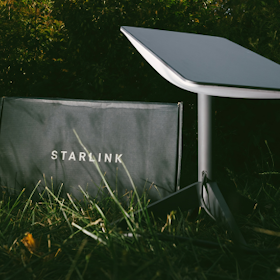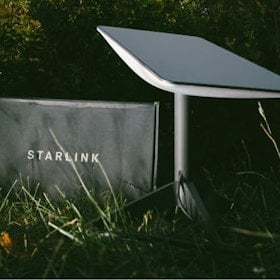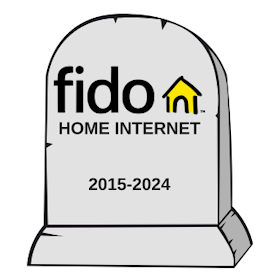- Wi-Fi 6 is the newest consumer wireless networking standard
- It manages multiple connections better than older wireless standards
- Cord-cutters, remote workers, and families benefit the most from Wi-Fi 6
- Setting up a Wi-Fi 6 network in your home is getting cheaper, but can cost hundreds of dollars
- Wi-Fi 6E adds 6 GHz frequency bands for even faster downloads and reducing interference
Modern wireless networking standards were created over two decades ago. Every few years, new specifications build on the old—bringing faster downloads, greater range, and more reliable connections. Canadians can now find new Wi-Fi 6 routers that support Wi-Fi 6E on 6 GHz bands.
With more Canadians working from home, reliable and consumer-friendly wireless networking is more desired than ever. WhistleOut clarifies what makes Wi-Fi 6 different from previous iterations, how you can get it, and what 6 GHz support offers.
What is Wi-Fi 6?
Wi-Fi 6 is the latest version of home wireless networking standards. For years, Wi-Fi generations were identified by cryptic engineering terms, like "802.11n" and "802.11ac." Wireless networking was rebranded to "Wi-Fi," and Wi-Fi 6 is simply the sixth generation of home wireless technology. Each version brings with it new features and capabilities to improve performance.
Wireless networking generations
| Generation | Networking standard | Frequency (GHz) | Download speed* (Mbps) |
|---|---|---|---|
| 1 | 802.11a | 5 | 54 |
| 2 | 802.11b | 2.4 | 11 |
| 3 | 802.11g | 2.4 | 54 |
| Wi-Fi 4 | 802.11n | 2.4/5 | 300 |
| Wi-Fi 5 | 802.11ac | 2.4/5 | 1,000 |
| Wi-Fi 6 | 802.11ax | 2.4/5/6 | 9,600 |
* Bandwidth listed is the maximum possible. Some features including multiple antennas, simutaneous connections and MIMO can further increase the advertised maximum bandwidth.
Benefits of Wi-Fi 6
FYI: Wi-Fi doesn't stand for "Wireless Fidelity"
Despite the audible similarity to “Hi-Fi”, the name “Wi-Fi” is simply a branding term created to help consumers easily identify compatible home networking products.
Download speed is clearly the most impressive upgrade, but Wi-Fi 6 also brings network stability when connecting multiple devices. Your home may have a few people working and learning during the day, while smart TVs, voice assistants, lightbulbs, and more are connected to that same wireless network. Revisions to broadcasting and data management in the Wi-Fi 6 protocol help reduce the noise caused by all those wireless devices.
Older wireless technology wasn’t designed to efficiently manage all these simultaneous connections, but Wi-Fi 6 can juggle dozens of devices. Even better, it prioritizes time-critical services like video streaming, so that it doesn't stutter justbecause your smart thermostat is checking the temperature.
What is MIMO?
Many Wi-Fi 6 routers list MIMO as a feature, but what is it? MIMO is an acronym for Multiple In and Multiple Out. Simply put, it means the router can handle communications from many devices at the same time. This is a valuable feature if you have more than one person in the house using video conferencing for work or school.

Setting up a Wi-Fi 6 network
To connect at these upgraded speeds, you need a new Wi-Fi 6 router that will connect your wireless devices to the internet. Although this new technology is getting cheaper, setting up a Wi-Fi 6 network can still be expensive. Premium Wi-Fi routers from Asus, Netgear, Linksys, D-Link and more have supported Wi-Fi 6 since 2019, but prices can be in the hundreds of dollars. Thankfully, cheaper models are also starting to appear on the market.
If you have a large house to cover, you may need to add additional access points or a mesh system to your home. Even though 5 GHz and 6 GHz signals can travel great distances, they don’t go around corners or through walls very well. If you find there are places in the house where it’s hard to get a signal, we recommend a Wi-Fi booster solution.

What devices support Wi-Fi 6?
Most newer wireless devices already have Wi-Fi 6 built-in, including all current Apple iPhones. Every model of iPhone 12 and newer.
Top-of-the-line smartphones from Samsung, TCL, and Motorola released since 2020 include Wi-Fi 6 support. Many cheaper models still use the older Wi-Fi 5 technology. Premium laptops now include Wi-Fi 6 (which makes that Zoom call a little more reliable).
What Is Wi-Fi 6E?
Wi-Fi 6E is a new wave of wireless networking that enables communications over 6 GHz frequency bands. There’s no need to jump to Wi-Fi 7 for the next technological leap in wireless networking. This new tech increases data transmission by opening up new channels of radiofrequency available for broadcasting.
Even though the range isn't as far as 2.4 GHz and 5 GHz can achieve, a Wi-Fi 6E router enables faster data transfers and better noise reduction. Think of Wi-Fi 6 as a paved country road while Wi-Fi 6E with 6 GHz is a superhighway.
Wi-Fi 6 vs. Wi-Fi 6E with 6 GHz:
That's a lot of "Sixes". Here's a simple breakdown of the difference between Wi-Fi 6 and Wi-Fi 6E:
- Wi-Fi 6 uses 2.4 GHz and 5 GHz radio channels and is widely available on new devices released since 2019
- Wi-Fi 6E adds 6 GHz radio channels and is found on some premium devices released since 2021
Is Wi-Fi 6E available in Canada?
Canadians can find Wi-Fi 6E routers and devices on the market today. Some frequencies in the 6 GHz band are used by broadcast television, military, or radio telescopes. It’s important that new wireless applications don’t interfere with these critical systems. As of June 2021, Innovation, Science and Economic Development Canada (ISED) approved the channels for use in consumer networks.
New devices that support Wi-Fi 6E are appearing on the market every day; the new eero 6E from Amazon is one of the most affordable ways to create a Wi-Fi 6E network in your home. Samsung’s premium Samsung Galaxy S22+ supports Wi-Fi 6E, but there are no Apple iPhones that currently support Wi-Fi 6E.
Which Amazon eero router is right for your Wi-Fi network?
| Model | Wi-Fi | Coverage | Price | Buy |
|---|---|---|---|---|
| eero | Wi-Fi 5 | 1,500 sq ft | $ | View Price |
| eero 6 | Wi-Fi 6 | 1,500 sq ft | $ | View Price |
| eero 6+ (new) | Wi-Fi 6 (160Hz) | 1,500 sq ft | $$ | View Price |
| eero Pro 6 | Wi-Fi 6 (160Hz) | 2,000 sq ft | $$ | View Price |
| eero Pro 6E (new) | Wi-Fi 6E | 2,000 sq ft | $$$$ | View Price |
Is it worth upgrading to Wi-Fi 6?
Newer tech is always better, so yes—Wi-Fi 6's enhancements will improve your wireless networking experience. However, the best answer for you comes down to what issues you currently have with your home wireless network. If there is a lot of interference from multiple wireless devices, then the traffic management built into Wi-Fi 6 is worth the investment. If all you’re looking for is faster internet, then look for a better internet provider, hook up critical systems to wired ethernet, and cover rooms that have a poor signal with Wi-Fi extenders.
If you (or your neighbours) have a lot of wireless devices creating too much network noise—like smart bulbs, 4K streaming TVs, and video conferencing computers—then Wi-Fi 6 is worth the upgrade. Just remember that both the wireless router and your most important devices need to support Wi-Fi 6 before you can take full advantage of it.
Is Wi-Fi 6E Worth the Upgrade, Too?
Some rooms in your home may have terrible signal, and that’s where Wi-Fi 6E might help even with your older tech. Some mesh routers use the 6 GHz frequency bands to connect with each other, offering exceptional speed from multiple points in your home. However, if you’re just looking for lower latency so you can frag your Fortnite enemies then look into a wired networking option; Wi-Fi 6E might be overkill.
Is My Internet Speed Fast Enough for Wi-Fi 6?
Before upgrading your wireless networking, you should test your existing internet speed. WhistleOut Canada recommends cable or fibre optic internet with at least 500 Mbps in order to fully enjoy the incredible speed and low latency possible from Wi-Fi 6.
Best Internet Plans for Wi-Fi 6
WhistleOut Canada's new Good Internet Speed Guide demystifies all that techno-babble so you can find a home internet plan you love that keeps up with Wi-Fi 6 and beyond. There are a lot of different internet service providers (ISPs) across the country. We’ve picked the best ISPs in each region of Canada. Even better, we can help you find an internet plan you’ll love.
Most internet providers install combination modem/Wi-Fi routers in your home, making it easy to set up a home wireless network. However, these often use older versions of Wi-Fi, so you may need to buy a separate Wi-Fi 6 router to get the fastest speeds and reduce interference.
Related Articles
Find Better Internet and Phone Plans
Hundreds of internet plans unpacked. All the facts. No surprises.
Internet Providers by Provinces and Territories
- Internet in Alberta
- Internet in British Columbia
- Internet in Manitoba
- Internet in New Brunswick
- Internet in Newfoundland and Labrador
- Internet in Northwest Territories
- Internet in Nova Scotia
- Internet in Nunavut
- Internet in Ontario
- Internet in Prince Edward Island
- Internet in Quebec
- Internet in Saskatchewan
- Internet in Yukon Territory











































